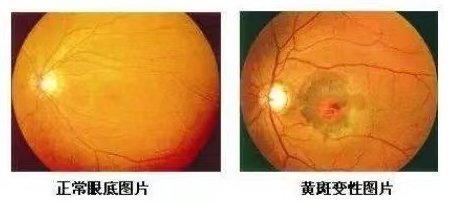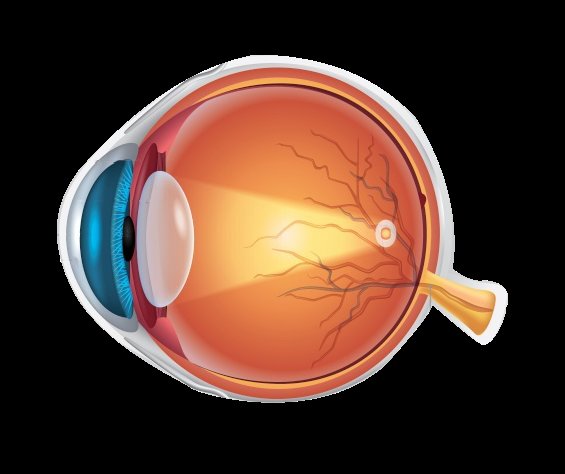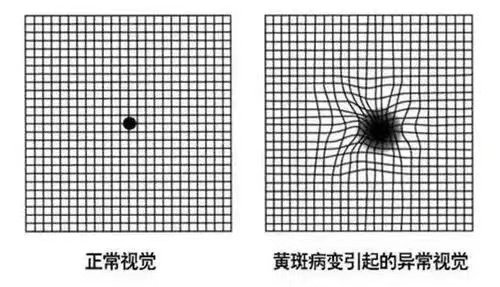With age
Many elderly people will feel blurred vision
Decreased vision or even deformed, discolored, etc.
At this time
Many elderly people think that they have cataracts and presbyopia
It is not so
Go to the hospital for a check
It is: age-related macular degeneration
< p> The 61-year-old Aunt Liu (pseudonym) recently found that she could not see clearly in one eye, and she could not see the middle of the face when looking at people. She had to look diagonally to make it clearer. The line of characters on the phone was crooked and slightly deformed. Like a broken phone screen. “Is this presbyopia or cataract?” The old man was full of doubts, so accompanied by his family, he went to the ophthalmology clinic in the west campus of our hospital for treatment. Chief physician Wang Weixia of the ophthalmology department conducted a detailed examination for her and came to the conclusion: Aunt Liu’s eyesight decreased. because of age-related macular degeneration.

What is age-related macular degeneration?

According to Wang Weixia, the macula is located in the center of the retina and is the most important area for central vision. With the increase of age, the macular area will gradually degenerate, develop lesions, and eventually affect vision, which is medically called “macular degeneration”. The older you are, the greater the chance of developing macular degeneration. This age-related macular degeneration is medically called “age-related macular degeneration”, or “senile macular degeneration”. It is associated with cataract and glaucoma. It is recognized by WHO as one of the three leading blind eye diseases in the world.
What are the symptoms of age-related macular degeneration?
Clinically, age-related macular degeneration is generally divided into two types: dry type and wet type.
Dry age-related macular degeneration has little effect on vision, and usually develops slowly, mainly changing to macular drusen, which can be simply understood as some yellow-white lipids deposited in the macula. In the early stage, there may not be obvious visual loss, and in the late stage, the color of seeing things becomes lighter and blurred, and the visual acuity of both eyes is usually reduced to the same degree.

Wet age-related macular degeneration develops rapidly and manifests as new blood vessels in the macula, which can be simply understood as the new growth of the macula These new blood vessels are very fragile and can easily cause retinal edema, hemorrhage and structural damage, resulting in blurred and deformed seeing, and advanced patients will experience sharp decline in vision and even blindness, which seriously affects the quality of life.
Why do older people develop age-related macular degeneration?
Age-related macular degeneration may be related to age, chronic light damage, nutritional deficiencies, smoking, heredity and other factors. People over 50 years old, people with a history of diabetes, hypertension, and hypercholesterolemia are all at high risk for age-related macular degeneration.
The difference between age-related macular degeneration and cataract and presbyopia
Alternative eye test, the central vision of both eyes is different; The object loses its color; “it seems that the lens cannot be cleaned all the time”, there is a black spot in the center of the eye; the central area of the eye is not clear, and the more you want to see, the more blurred the place. According to Wang Weixia, this is an early warning signal of age-related macular degeneration.

Outpatients are most likely to mistake the symptoms of macular degeneration for cataracts and presbyopia. Cataracts usually appear as a gray area in front of your eyes and you cannot see clearly. Presbyopia is a normal physiological phenomenon, not caused by organic lesions. The symptom is that after people enter middle-aged and old age, seeing close-up objects becomes blurred, but distant objects are still clear.
Wang Weixia reminded that early detection, diagnosis and treatment of age-related macular degeneration is of great significance to maximize the protection of central vision and prevent blindness. Elderly people over the age of 50 need to have regular eye examinations every year. If they find adverse eye symptoms such as vision loss, visual distortion, and dark shadows, they should seek medical attention in time to avoid irreversible vision loss.
Source: Qingdao Municipal Hospital
Hubei Radio and Television Health Development Center Graphic Editor: Meng Fei